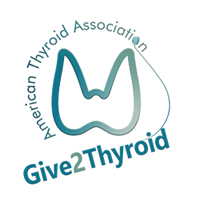The questions consisted of 13 theoretical scenarios, each describing a patient with hypothyroidism who had either no symptoms, various symptoms, low T3 concentration, and or had a genetic variant that could modify the metabolism of thyroid hormone. In each scenario, the physician could choose six treatment options, including continuing L-T4, adding L-T3 or replacement of L-T4 with desiccated thyroid extract.
Of the 363 responders, 86% were endocrinologists, 64% were from North America, and 53% had been in practice for more than 10 years. Once the answers were analyzed using statistical methods, it was seen that, although 98% of physicians opted to continue L-T4 for the standard patient (featured as a 29 year old female with Hashimotos’ thyroiditis, normal body weight, lack of suggestive symptoms, TSH of 2.2 and not contemplating pregnancy), there were situations in which the physicians would consider less conventional treatment. The patient characteristic that most influenced the prescribing of L-T3 was the presence of symptoms, but doctors also were more likely to prescribe it if patients requested it or if their measured T3 was low.
These results were surprising because as of now, most clinical trials have failed to show improvement in quality of life or in cognitive measures when a patient is treated for hypothyroidism with T3 containing treatments. It is also apparent that there has been a change in prescribing patterns since 2013, when a similar study was carried out. In that study, only 3.6% of the physicians indicated that they would consider prescribing L-T3 to a symptomatic patient, while in this study, a symptomatic patient would have been prescribed L-T3 by 18% of the responders.
WHAT ARE THE IMPLICATIONS OF THIS STUDY?
In summary, this study indicates that doctors are increasingly prescribing treatments that include L-T3 when encountering patients who complain of persistent symptoms of hypothyroidism in spite of standard L-T4 treatment. This change in prescribing trends cannot be explained by new supporting evidence because only one trial was conducted since 2009 and it did not show superiority of combination therapy over standard therapy.
Therefore, it seems that doctors are listening to their patients and partnering with them with respect to management of their therapy. However, there is obviously a need to carry on clinical trials designed to assess the long term safety of treatments that add L-T3, including the best dosing and monitoring strategies. A long term study and assessment is crucial because hypothyroidism is a life-long condition.
— Jessie Block-Galarza, MD




